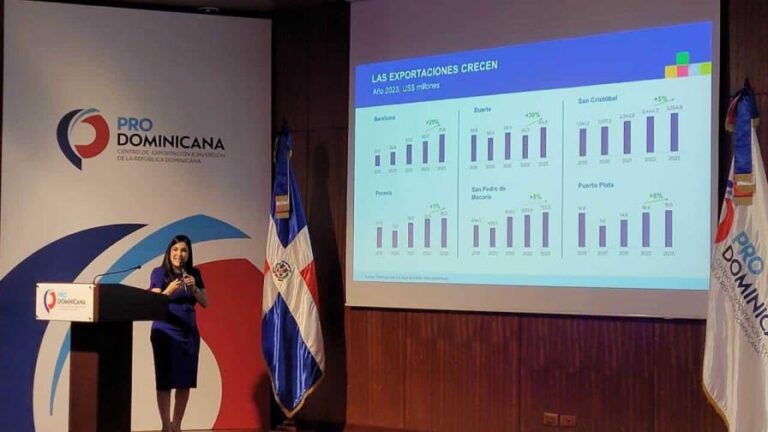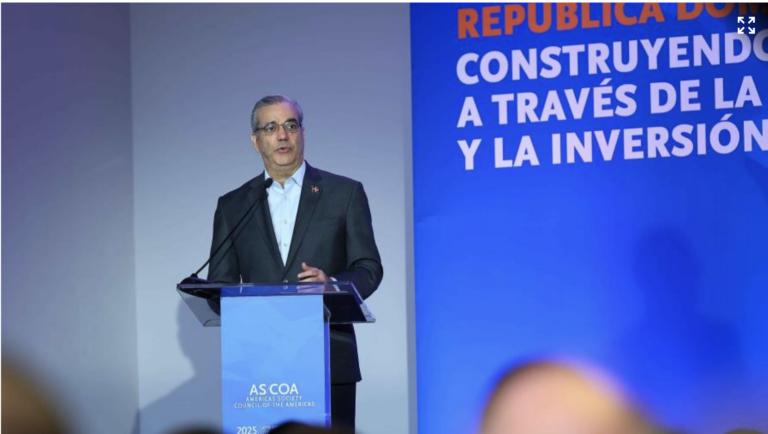
Top graph: Variation in arrival of tourists worldwide between 2019 and 2022. (In%, countries that received as many or more tourists than the DR (6,446,036) in 2019. Source WTO
Bottom graph:Variation in arrival of tourists in the Caribbean between 2019 and 2022 (In %). Source WTO
The Covid-19 pandemic was a litmus test for all economies in the world, due to the serious depression it triggered as governments, overwhelmed by the uncertainty of a world without vaccines, were adopting “lockdown” policies to avoid an unmanageable spread of the disease that would cause the collapse of public health systems. Global GDP fell 3.4% in 2020; The world lost nearly $2 trillion in production as a result of measures taken to moderate the spread of the pandemic. One of the global industries hardest hit by the pandemic was tourism. The World Tourism Organization (WTO) shows that the coronavirus pandemic caused a global drop of 72% and 71% in the arrival of international tourists in 2020 and 2021, respectively. Combining the two years, the drop reached 2.1 billion international tourists and a loss of 2.1 trillion dollars in the period 2020-2021. The global GDP generated by tourism fell by 3.4 trillion dollars in the period 2020-2021, an unprecedented catastrophe.
For countries with well-diversified foreign exchange earnings structures and where tourism revenues are not critical to the sustainability of external accounts, they could afford to adopt a “watch and wait” strategy. These countries have export platforms for industrialized and sophisticated goods of such magnitude that a loss of tens of billions of dollars of tourism revenues does not translate into a collapse of the economy. For example, in the U.S., tourism revenues accounted for 9.6% of total export revenues for goods and services in 2019. Despite the loss of US $ 155,242 million in tourism revenues suffered by the US economy in 2020, that was not the main cause of the deterioration of its external accounts and the 2.8% drop in US GDP that year.
However, “there is a country in the world placed on the same path as the sun”, where the economy’s dependence on tourism did not allow for the strategy of “watch and wait” to be adopted. In 2019, the Dominican Republic received tourism revenues amounting to US$7,472 million, equivalent to 36.4% of total revenues from exports of goods and services. To stand by idly was not an option for us. Looking at the results of what happened between 2019 and 2022 allows us to conclude that the Dominican Republic was, without a doubt, the most successful country in the world in the recovery of tourism after the catastrophe suffered by this industry here and worldwide.
Anyone who doubts the above statement should do the following. Enter the WTO database and search for all the countries in the world that in 2019 received tourists at levels equal to or higher than those received by the Dominican Republic in that year (6,446,036). It is important to establish that floor to avoid the base effect: if a country received 10 tourists in 2019 and then in 2022 received 50, it registered an increase of 400%, even though the increase was only 40 tourists. Once the number of tourists received by our country in 2019 was established as a floor, we found that, in that year, including the Dominican Republic, 44 countries in the world received a number of tourists equal to or greater than that received by our country.
Here is the result: 43 of the 44 countries and/or special administrative regions evaluated received fewer tourists in 2022 than in 2019. To be more precise, the decrease compared to 2019 ranged between -0.2% (Croatia) and -97.6% (Hong Kong). In the group of 44, only the Dominican Republic received more tourists in 2022 than in 2019, going from 6,446,036 to 7,163,394, reflecting an increase of 11.1%. When we presented the performance of the countries competing with us in the Caribbean, without the restriction of the minimum floor of tourists received in 2019, the Dominican Republic turned out to be the most successful. Only Puerto Rico, with a growth in tourist arrivals of 8.6% between 2019 and 2022, comes close. Jamaica, Mexico, Bahamas and Cuba, showed a decrease that ranged between -7.6% and -62.2%, in relation to tourists received in 2019. Without a doubt, Dominican Republic “is the Caribbean Tourism Tiger”.
One might think that this result was possible because we deliberately allowed the real exchange rate (adjusted by the differential of the average inflation accumulated between 2019 and 2022 of the US and the Dominican Republic) to depreciate significantly, with the aim of making the Dominican tourist offer cheaper. But that’s not what happened. The real exchange rate in 2022 (RD$51.64 per dollar) was practically the same as in 2019 (RD$51.34 per dollar).
The Dominican post-pandemic tourism miracle was the result of a set of early decisions and wise actions, defined within a firmly executed comprehensive detailed strategy that was unwavering and clearly communicated. Aware that it would be impossible to achieve economic recovery if tourism did not rise as quickly as possible, the current administration understood that standing by idly was not an option for the Dominican Republic. We were one of the first countries in the world to open our airports to the international flow of passengers, freeing visitors from previous COVID-19 tests and conducting random “tests” on small samples of arriving passengers and accepting recommendations from the Pan American Health Office. Upholding the internal curfew and measures to moderate the spread of the virus sent clear signals to tourists that our destination was more attractive and less risky. The decision to give preference to hotel employees in the vaccination process, once vulnerable groups have been vaccinated, combined with the support provided by the hotel sector in successfully carrying out vaccination ops, could not have been timelier or more sensible. Although initially many doubted the effectiveness of it, the decision to implement a free traveler assistance plan to include COVID coverage during the critical 6 months of the pandemic, provided additional security to tourists during their stay in Dominican hotels and beaches. Protocols with international standards were implemented for all sub-sectors feeding the tourism industry and a strict control and permanent inspection program was carried out.
An effective Tourism Cabinet was created, led by the President of the Republic, which quickly opened the doors to the decisions and executions of the various ministries. The facilities and flexibilities granted by the Government and the Central Bank in the fiscal, financial, and labor spheres were extended to the hotel sector, subject to hotels opening their facilities as soon as possible despite the very low flow of tourists from abroad. It was necessary to send a clear signal to potential tourists and tour operators that if the demand for tourism to our destination was there, then we would be ready to meet it. In addition to stimulating reopening by improving their cash flow the “Our Own Ambassadors” program, which offered incentives to Dominican households to enjoy domestic tourism in our hotels, sent a clear signal abroad that the availability of rooms was not just theory but real, since they were being occupied by thousands of Dominicans eager to reduce the depressive effects caused by curfew policies and social distancing. What would be the point of having rooms ready if there were no flights and seats available to travel. Therefore, the strategy included the realization and execution of risk-sharing agreements with airlines. Only this way could the recovery of routes and air transport be possible.
Additionally, there was a dramatic change in the marketing strategy that allowed a very swift migration towards digital marketing, appreciably and intelligently directed towards the markets and segments where the demand for tourism was still latent. Before the pandemic, digital barely absorbed 25% of marketing investment; A few months after the pandemic began, digital marketing represented 70% of total investment.
The recovery of Dominican tourism post-pandemic has been, without a doubt, the result of the most successful public-private partnership executed by our nation. In addition to promoting the transparency of the investment process, by incorporating the private sector in devising the strategy and putting both current and future public and private investments in tourism promotion on the table, the creation of a Public-Private Marketing Committee avoided duplicating efforts and improved the effectiveness of marketing the Dominican Republic as a destination. It is well known that since the international tourism fairs were restarted, the country has been present, participating in some as partners. This permanent presence allowed Dominican tourism to retain its place in the imagination of potential tourists and tour operators, while reestablishing contact with all members of the international value chain.
The international value chain was chosen as the target for the effective intense management and close communication strategy that was executed. Supported by the daily data and information collection, with sufficient details to react in time, the communication strategy allowed for a strong and credible message to the members of the value chain to be transmitted. This enabled marketing agreements based on performance measurement, the use of Online Travel Agencies (OTA), and the realization of “roadshows” in different cities around the world, headed by the Minister of Tourism, to answer questions, evaluate cooperation agreements, report on different destinations and listen to proposals or suggestions to improve the Dominican tourism offer in the difficult situation facing the world. Aware that we are not alone in the market and that our competitors are on the lookout for any news or event that could lead to a negative campaign against the Dominican Republic, as happened in 2019, it was necessary to shield the fruits of the strategy against possible negative media noise. The decision to create a Crisis Committee, led by the Minister of Tourism and the contracting of effective services for the management and mitigation thereof is a reflection of the wholesomeness and consistency of the strategy put in place.
To all the above certain actions must be factored in whose impact will be seen in the medium and long term, which sent a clear message to the international value chain about the DR’s permanent commitment to tourism. This component highlights the infrastructure plan in the hotel zones, the development and execution of strategies for the development of new destinations, and the country’s commitment to regulatory improvement and upholding good policies that have allowed attracting investment to the sector. Analyzed objectively and given the results, we must acknowledge that the efforts made by the current government to achieve the recovery of tourism have been truly extraordinary. The commitment and effort of President Luis Abinader, the effective, agile and relentless work of the Minister of Tourism, David Collado, and the wise decision to involve the private sector to make the recovery of tourism a kind of Nation Project, after the collapse suffered by the sector and the economy in 2020, must be acknowledged by all Dominicans, regardless of political preferences.

Top graph: Arrival of tourists to the DR (1980-2022) Source Dominican Central Bank BCDR
Middle graph: Arrival of tourists to the DR (left Jan-Mar 2022; right Jan-Mar 2023) Source Dominican Central Bank BCDR
Bottom graph: Tourism Revenue in DR (1980-2022 US$ millions). Dominican Central Bank BCDR
Unfortunately, for some reason nature understood that the collapse and subsequent “stress test” caused by the pandemic in the tourism-dependent economies of the world, such as those of the Caribbean, was not enough. We have hardly bid goodbye to Covid-19 when, unprecedent gigantic waves of sargassum arrive, threatening to affect one of the main attractions offered by the Caribbean to foreign tourists: its spectacular beaches. Just as there were no vaccines for Covid-19 when the pandemic erupted, there is also no effective technology to stop the undesirable immigration of sargassum. Unfortunately for us, sargassum enters from the east and south, where the bulk of the country’s hotel offer is located. Although free of sargassum, if necessary, the Atlantic coast does not have enough hotels to make viable the transfer of tourists disappointed to see the beaches on the eastern seaboard inundated with sargassum.
A lot of effort, talent and creativity will be needed to pass this new test. It is essential that the public-private partnership that managed to make the Dominican Republic the most successful country in the world in the recovery of tourism after the Covid pandemic, be re-edited to face this new challenge. The “watch and wait” option is still not realistic. Let us be sensible. Our nation is going to need an ever-growing tourism sector. Just 200 or 300 thousand additional hotel rooms to those we have, not including those offered through Airbnb, will allow us to offer jobs to the hundreds of thousands of young people who will enter the labor market in the coming years. As long as our public education system continues to provide low-skilled human resources, due to the hijacking of hundreds of thousands of children in our schools by teachers unable to teach, there is no room for inventions. As Corporán would say, tourism continues!
Source:
El Caribe



